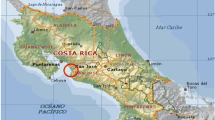Abstract
This article shows how social capital impacts fisheries management at the local level in Chilika Lake, located in the state of Orissa in India. In Chilika, the different fishing groups established norms and “rules of the game” including, but not limited to, spatial limits that determine who can fish and in what areas, temporal restrictions about when and for how long people may fish, gear constraints about what harvesting gear may be used by each group, and physical controls on size and other characteristics of fish that may be harvested. A survey of the members of fishing groups has shown that the bonding social capital is strong within the Chilika fishing groups. Bonding and bridging social capital keeps the fishers together in times of resource scarcity, checks violations of community rules and sanctions, and strengthens the community fisheries management. In contrast, linking social capital in Chilika appears to be weak, as is evident from the lack of trust in external agencies, seeking the help of formal institutions for legal support, and increasing conflicts. Trust and cooperation among fishers is crucial in helping to build the social capital. A social capital perspective on fisheries governance suggests that there should be a rethinking of priorities and funding mechanisms, from “top-down” fisheries management towards “co-management” with a focus on engendering rights and responsibilities for fishers and their communities.

Similar content being viewed by others
References
Berkes F, Colding J, Folke C (2000) Traditional ecological knowledge. Ecol Applic 10:1251–1262
Bourdieu P (1983) In: Richardson JG (ed), Handbook of theory and research for the sociology of education. Greenwood Press, Westport, Connecticut, pp 241–258
Coleman JS (1988) Social capital in the creation of human capital. Am J Sociol 9:S95–S121
Coleman SJ (1990) Foundations of social theory. Harvard University Press, Cambridge, Massachusetts
Erickson BH (1995) Networks, success, and class structure: a total view. Sunbelt Social Networks Conference, Charleston, South Carolina, February 1995
Erickson BH (1996) Culture, class and connections. Am J Sociol 102:217–251
Grafton RQ (2005) Social capital and fisheries governance. Ocean Coastal Manage 48:753–766
Hviding E, Jul-Larsen E (1995) Community-based resource management in tropical fisheries, University of Namibia, Windhoek
Jentoft S, McCay BJ, Wilson DC (1998) Social theory and fisheries co-management. Marine Policy 22:423–436
King M, Faasili U (1999) A network of small, community-owned Village Fish Reserves in Samoa. Traditional Marine Resource Manage Knowl Information Bull 11:2–6
Knack S, Keefer P (1997) Does social capital have an economic payoff? A cross-country investigation. Q J Economics 112:1252–1288
Lin N, Dumin M (1986) Access to occupations through social ties. Social Networks 8:365–385
Lin N (1999) Building a network theory of social capital. Connections 22:28–51
Mohanty SK (1976) Further additions to the fish fauna of Chilika Lake. J Bombay Natural History Society 72:863–866
Nagothu US (2004) Fisheries in Chilika Lake: how community control and access impacts the management? J Envir Manage 73:257–266
Ostrom E, Gardner R, Walker J (1994) Rules, games, & common-pool resources. The University of Michigan Press, Ann Arbor, Michigan
Platteau JP (2000) Institutions, social norms and economic development. Gordon and Breach Publishing Group
Pomeroy RS (1995) Community based co-management for sustainable coastal fisheries management in South-east Asia. Ocean Coastal Manage 27:143–162
Portes A (1998) Social capital: its origins and applications in modern sociology. Annu Rev Sociol 22:1–24
Pretty J (2003) Social capital and the collective management of resources. Science 302:1912–1914
Putnam RD (1993) Making democracy work: civic traditions in modern Italy. Princeton University Press, Princeton, New Jersey
Woolcock M (2001) In: Helliwell JF (ed), The contribution of human and social capital to sustained economic growth and well-being. International Symposium Report, Human Resources Development Canada (HRDC) and Organisation for Economic Co-operation and Development (OECD), pp 65–68
Woolcock M, Narayan D (2000) Social capital: implications for development theory, research and policy. World Bank Res Observer 15:225–249
Zann LP (1999) A new (old) approach to inshore resources management in Samoa. Ocean Coastal Manage 42:569–590
Acknowledgment
The author acknowledges the support from SITS AS, Oslo, Norway, to conduct the field survey in Chilika Lake during 2002 as part of the capacity-building component.
Author information
Authors and Affiliations
Corresponding author
Rights and permissions
About this article
Cite this article
Sekhar, N.U. Social Capital and Fisheries Management: The Case of Chilika Lake in India. Environmental Management 39, 497–505 (2007). https://doi.org/10.1007/s00267-006-0183-0
Received:
Accepted:
Published:
Issue Date:
DOI: https://doi.org/10.1007/s00267-006-0183-0




